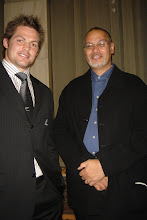That we have a the treaty is generally well known, although I dare say that while everyone in the country is aware of the treaty few are really familiar either with the treaty itself or why one was needed.
It has unfortunately fallen into disrepute, mainly through the machinations of vested interests, both Pakeha and Maori. Some people want the Treaty forgotten, using arguments about its relevance and its necessity.
Most of these people have little understanding of the historical basis for the 1840 decisions, nor do they understand the language used in the treaty which is the foundation of claims and counterclaims made today. Hopefully over the last week you have gained a greater appreciation of the Treaty debate.
For our purposes we are concerned with why a Britain and Maori sought an accommodation. The Treaty required both parties to be willing to take part, however what was offered or expected did not always mesh.
Britain as we discussed in class sought to legitimise their relationship with the Maori. They were concerned over the possible settlement of the country by private companies like the New Zealand Company led by Wakefield. Clashes between Settlers and Maori could be disastrous if there were no military presence.
The "Tory" arrived in Whanganui-a-Tara (Port Nicholson) shortly before Hobson arrived in the Bay of Islands. This coincidence panicked both parties. The Company wanted to acquire as much land as possible before a colony was announced. They hoped to forestall any limitations that might be created should the Government place a moratorium on land sales.
For his part Hobson wanted to legitimise his position and to stop both the Company or anyone else for that matter from infringing on British sovereignty in New Zealand. Thus his apparent haste at writing, translating and negotiating the Treaty at Waitangi.
Besides the Company there were also the possible arrival of the French or Americans. French settlers were rumoured to be headed for Akaroa on Banks peninsula. This may explain his decision to claim the South Island on the basis of discovery (by Cook) rather than by negotiation. It would have taken to long to travel to the South Island. Surprisingly the treaty was still taken south to the Ngai Tahu who signed at three sites.
From our work in class you will be aware of the various points of view expressed at the meeting on the 5th February. Its seems to have been equally weighted for and against with the matter evenly balanced. Kawiti had argued against it as he distrusted the Missionaries until some important chiefs like Waka Nene spoke in favour of it.
The language of the treaty is extremely important especially in the Maori version. Kawanatanga means governorship, Rangatiratanga means sovereignty.
Consider your textbooks. They belong to the school who has Rangatiratanga over them. You are looking after them, you have Kawanatanga.
Claudia Orange has made the point that the first article should have used the term 'Mana', but Williams who helped translate it knew Chiefs would never have agreed to this.
Maori claims through the 19th and into the 20th century against the treaty are all based on the second article which assures Maori of their ownership of their lands, fisheries, taonga etc.
The “fourth article” at Pompalliers prompting assured religious freedom, much to the consternation of the CMS/WMS who had hoped for an extension of the State religion status accorded to the Anglican church in Britain.
Several Missionaries spoke at the meeting. All extolled the virtues and advantages a treaty would bring Maori. As we mentioned in class the idea of a covenant between the Queen and
Maori was presented, reinforced by Maori understanding of the Bible where covenants were sacred agreements made between Man and God. Maori (apart from Kawiti) had few reasons to disbelieve or question the motives of the Missionary(s).
The treaty was then copied and sent to the south. However Orange has made the point that other chiefs who signed often did so on the basis that the Hui at Waitangi having already thrashed out the pros and cons of signing and that if Nga Puhi thought it a good idea then they to should sign.
(New 2008) Maori protocols said that a Hui of any standing would thrash out all of the arguments for and against the proposition. A traditional Hui would have continued until everyone had reached agreement. Traders and Missionaries who carried the Treaty around the country may well have exploited this belief, encouraging other chiefs to sign the document.Britain soon decided that the 500 Maori who signed the treaty represented enough of a sample to announce annexation of the whole country. Again this shows the lack of awareness of the makeup of Maori society and the tribal nature of their culture.
 One of the chiefs at Waitangi shook hands with Hobson and commented that he was sick and would die soon. Hobson did in deed suffer a stroke and was effectively laid up for several months until he died.
One of the chiefs at Waitangi shook hands with Hobson and commented that he was sick and would die soon. Hobson did in deed suffer a stroke and was effectively laid up for several months until he died. The other decision was to move the capital south to Auckland. As I mentioned in class this was prompted by the political necessity of placing the European capital between the two largets concentrations of Maori in the country….Nga Puhi in the north (today still the largest individual Iwi) and the various Waikato Iwi (Waikato, Tainui etc.).
The other decision was to move the capital south to Auckland. As I mentioned in class this was prompted by the political necessity of placing the European capital between the two largets concentrations of Maori in the country….Nga Puhi in the north (today still the largest individual Iwi) and the various Waikato Iwi (Waikato, Tainui etc.).






